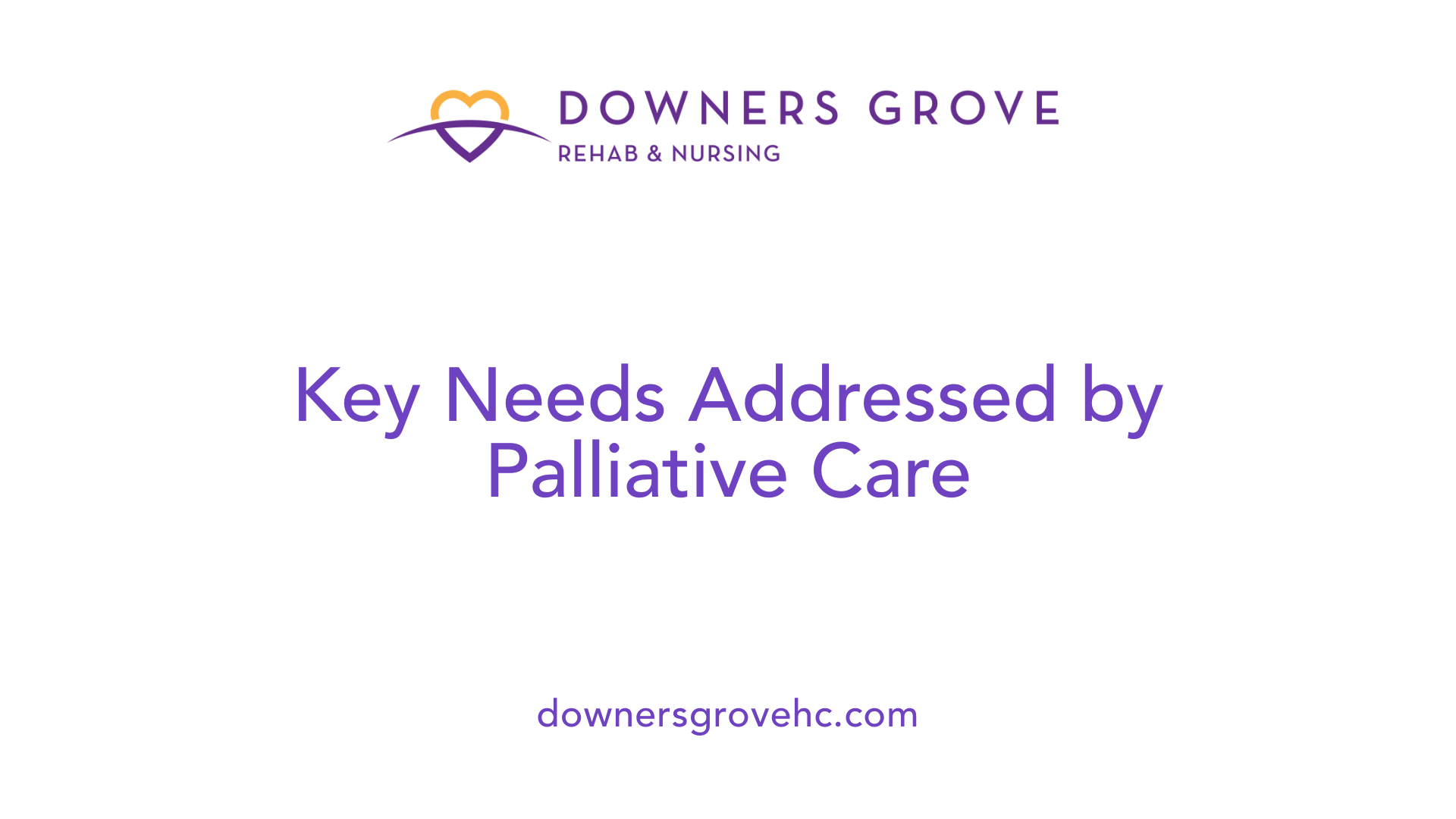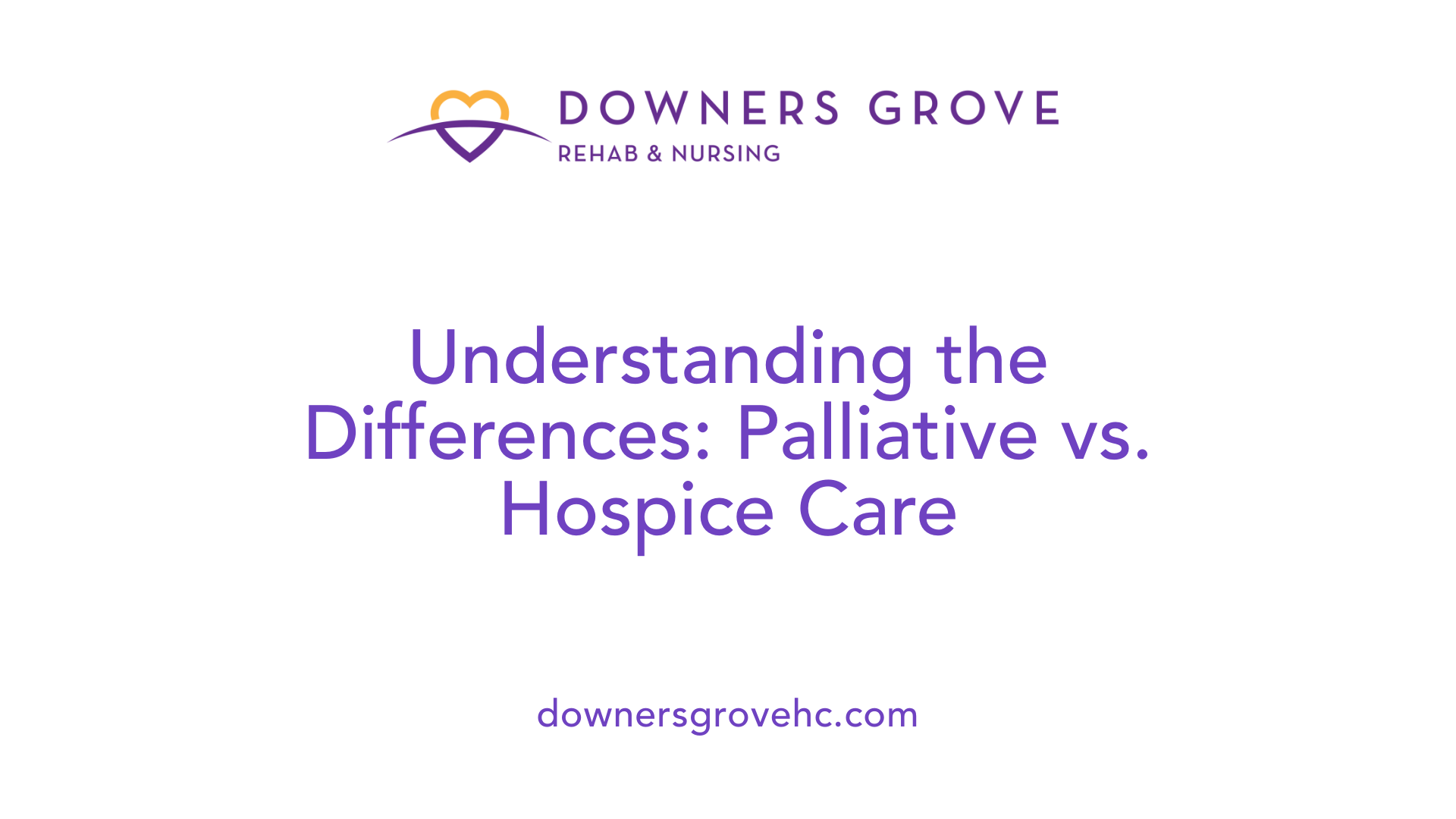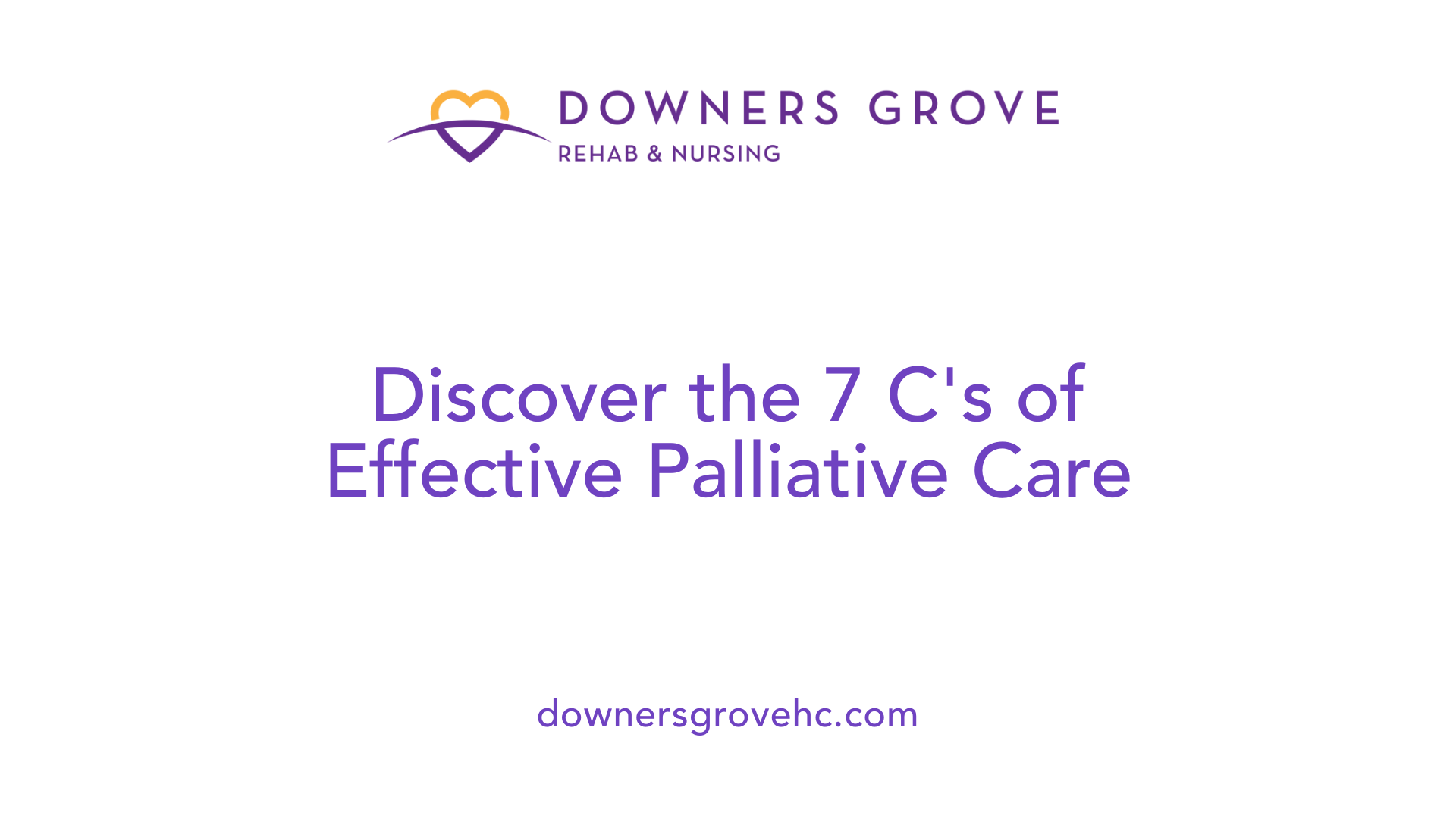Introduction to Palliative Care
As life expectancy increases and more seniors face serious illnesses, understanding the role of palliative care becomes crucial. Palliative care offers a comprehensive approach to enhancing quality of life for seniors and their families by addressing physical, psychological, and spiritual needs. This article delves into the purpose, benefits, and accessibility of palliative care, distinct from hospice care, and how it can significantly improve the well-being of elderly patients experiencing chronic conditions.
Defining Palliative Care for Seniors

What is palliative care for seniors?
Palliative care for seniors is a specialized approach aimed at enhancing the quality of life for individuals and families facing life-limiting illnesses. This form of care seeks to alleviate suffering in all aspects—physical, psychological, and spiritual. It is especially beneficial for older adults who may be dealing with complex health challenges such as advanced heart disease, cancer, or progressive dementia.
Importantly, palliative care is not confined to end-of-life scenarios; it can initiate early in the illness journey and can be delivered concurrently with curative treatments, ensuring that patients receive comprehensive support that meets their needs. A well-rounded care plan respects patients’ preferences, focusing on symptom management to relieve issues like pain, nausea, and difficulty breathing while also addressing emotional and spiritual needs.
Additionally, palliative care extends its reach to the family, offering support not just for the patient but also for relatives coping with the emotional strain of illness. This includes counseling services aimed at helping family members navigate their feelings of grief and distress, recognizing the close ties between the health of the patient and the emotional well-being of their caregivers.
Difference from hospice care
While both palliative and hospice care aim to improve patient comfort, they serve distinct roles in the healthcare continuum. Palliative care is available to anyone at any stage of a serious illness, which means older adults can access it early on, even when they are pursuing curative treatments. It provides symptom relief and supportive care, focusing on quality of life enhancements at any point in the illness trajectory.
In contrast, hospice care is specifically for individuals with terminal illnesses, typically when they are estimated to have six months or less to live. Hospice care prioritizes comfort over curative intentions, marking a significant shift in the treatment approach to focus exclusively on end-of-life care.
The distinction emphasizes that palliative care can—and should—be integrated into treatment plans alongside other medical interventions, providing holistic and tailored support for seniors during their health journeys.
Benefits and Critiques of Palliative Care

What are the benefits and criticisms of palliative care?
Palliative care offers numerous advantages for patients dealing with serious or life-threatening illnesses. One of the primary benefits is its ability to improve quality of life by providing comprehensive support aimed at managing symptoms and enhancing overall well-being. This type of care focuses on alleviating pain, fatigue, anxiety, and depression, ultimately supporting patients in achieving a better day-to-day experience, regardless of their illness stage.
Some of the specific benefits include:
- Holistic Support: Palliative care teams are interdisciplinary, including physicians, nurses, social workers, and spiritual advisors, ensuring that all aspects of a patient's and family's needs are met.
- Enhanced Communication: Patients and caregivers experience better coordination with healthcare providers, allowing for informed decision-making regarding treatments and care options.
- Emotional and Spiritual Counselling: Tailored support helps both patients and caregivers cope with the emotional toll of serious illnesses.
Despite its numerous benefits, palliative care faces criticisms and challenges. A general lack of understanding about its objectives often leads to misconceptions that palliative care is synonymous with end-of-life care. Additionally, some studies suggest that palliative support can unintentionally increase stress for families. Reports indicate that families receiving palliative care may exhibit higher symptoms of post-traumatic stress disorder compared to those receiving standard ICU care.
In summary, while the benefits of palliative care are clear, addressing its critiques through better education and communication remains crucial for maximizing its positive impact on patients and families.
Primary Needs Addressed by Palliative Care

What are the primary needs addressed by palliative care?
Palliative care focuses on four primary areas to support individuals facing serious illness, particularly as they approach end-of-life stages. These areas include:
Physical Comfort
Palliative care is dedicated to managing symptoms such as pain, nausea, and shortness of breath. Healthcare providers focus on effective symptom relief strategies, ensuring that individuals experience the least discomfort possible.Mental and Emotional Support
Addressing mental health is vital. Professionals offer support for anxiety, depression, and feelings of fear associated with serious illness, fostering a nurturing environment through therapy and counseling.Spiritual Care
Spiritual needs encompass finding meaning and purpose, as well as assisting patients in reconciling their life experiences, often involving discussions about beliefs, values, and legacy with chaplains or spiritual advisors.Assistance with Practical Tasks
The practical aspect includes helping with daily chores and supporting family caregivers to alleviate the burden during a challenging time. This ensures that patients and families can focus on quality time together without the stress of everyday tasks.
The comprehensive approach of palliative care encompasses these dimensions, offering a holistic support framework that addresses the varying needs of patients and their loved ones in what can be a tumultuous phase of life.
Palliative vs. Hospice Care: Key Differences

How does palliative care differ from hospice care?
Palliative care and hospice care are often confused, yet they serve different purposes in the continuum of care for individuals with serious illnesses. Palliative care focuses on providing relief from symptoms, enhancing comfort, and improving the quality of life for patients from the point of diagnosis onward. This specialized medical care can be provided alongside curative treatments, addressing not only the physical symptoms like pain and nausea but also emotional and spiritual support.
In contrast, hospice care is intended specifically for patients who have been given a terminal prognosis of six months or less to live and are no longer seeking curative treatment. It emphasizes maximizing comfort and dignity in the final stages of life. As a form of palliative care, hospice also prioritizes symptom relief but aims to halt curative efforts entirely.
Application and coverage differences
Another area where palliative and hospice care diverge is in insurance coverage. Hospice care is typically covered 100% by Medicare and Medicaid, easing the financial burden on families during a difficult time. Palliative care coverage, however, can be more variable, depending on the specifics of the patient's situation and their insurance plan. Both forms of care support not just patients but also their families, but the endpoint and intent of care differ significantly.
| Aspect | Palliative Care | Hospice Care |
|---|---|---|
| Stage of Illness | Any stage, alongside curative treatment | End-of-life, typically six months or less |
| Coverage | Varies by plan, may be partial | 100% covered by Medicare and Medicaid |
| Primary Focus | Symptom relief, quality of life, and holistic support | Comfort and dignity at end of life |
| Treatment Intent | Supportive and curative options | Comfort-only, no curative treatments |
| Eligible Patients | Anyone with a serious illness | Patients with terminal illnesses |
Understanding these differences is vital for patients and families navigating serious illnesses and seeking appropriate support and care options.
Qualifying for Palliative Care
Who is eligible for palliative care and when should it be offered?
Palliative care is accessible to individuals of any age facing serious or chronic illnesses. It can begin at any point during the illness, including immediately following a diagnosis. This form of care is designed to enhance quality of life by alleviating symptoms and providing emotional support, irrespective of whether curative treatments are ongoing.
Common conditions that warrant consideration for palliative care include:
- Cancer: All stages can be daunting, and symptom management is vital.
- Heart Failure: Patients often experience complex physical and emotional challenges.
- Chronic Obstructive Pulmonary Disease (COPD): This condition can lead to debilitating symptoms that require specialized support.
- Neurological Disorders: Diseases like Alzheimer's and ALS necessitate a coordinated approach to care throughout their progression.
Proactively discussing palliative care with healthcare providers is crucial to ensuring its appropriateness. Patients or their families should not hesitate to seek it early in the treatment process to maximize benefits. It’s essential to recognize that palliative care differs from hospice services, as it remains applicable for those not yet nearing end-of-life stages.
Improving Quality of Life Through Palliative Care
How can palliative care improve quality of life for seniors with serious illnesses?
Palliative care plays a vital role in enhancing the quality of life for seniors battling serious illnesses. By focusing on symptom management, this specialized care addresses common issues such as pain, anxiety, depression, and fatigue. It is designed to support patients no matter their age or stage of illness, ensuring they receive care tailored to their unique needs.
One of the significant benefits of palliative care is its holistic approach to treatment. Seniors experiencing chronic illnesses like cancer, heart disease, or Alzheimer's benefit from symptom relief as well as emotional and spiritual support. Research indicates that early integration of palliative care can not only better the patients' quality of life, but it may also contribute to extended life expectancy. This improvement often results from a closer alignment of treatment with the patients' personal goals and preferences.
Moreover, palliative care empowers seniors by promoting their autonomy over healthcare decisions, allowing them to actively participate in discussions about their treatment options. This involvement helps reduce feelings of helplessness often experienced by those with serious health conditions.
How do palliative care teams collaborate with care providers?
Palliative care is inherently interdisciplinary, meaning it relies heavily on collaboration among a diverse team of healthcare professionals. This team often includes doctors, nurses, social workers, nutritionists, and spiritual advisors, all working in tandem to ensure comprehensive, coordinated care.
Such collaboration is essential as it facilitates communication across different specialties, thereby improving the overall healthcare experience. For instance, palliative care teams coordinate with other healthcare providers to manage treatment plans effectively, ensuring that all aspects of the patient's care are aligned with their values and needs.
Additionally, by addressing both physical and emotional needs, palliative care teams can alleviate stress not only for patients but also for their caregivers. This integrated approach helps reduce the burden on families, offering vital support through difficult times and fostering a supportive care environment that enhances the quality of life for everyone involved.
Through effective communication and teamwork, palliative care teams convey clear goals for patient care, which ultimately leads to heightened patient satisfaction and comfort.
Accessing Palliative Care Services
How to get services
Accessing palliative care services can begin at any stage of a serious illness. Patients or their families can request a referral from their primary care physician, who can connect them with a palliative care team. These teams are typically available in various settings, including hospitals, outpatient clinics, and even at home, ensuring support is accessible when needed.
Palliative care providers include doctors, nurses, social workers, and spiritual advisors who work collaboratively to create a tailored care plan. Patients experiencing distress from symptoms like pain, fatigue, or emotional issues should discuss the option of palliative care early, especially when managing complex treatments.
Insurance and coverage options
Many health insurance plans, including Medicare and Medicaid, offer coverage for palliative care services. It's important for patients and families to check with their insurance providers to understand the specifics of their coverage, as this can vary depending on the policy.
In general, most private insurances cover palliative care, making it a viable resource for those suffering from serious illnesses.
The 7 C's of Palliative Care

What are the 7 C's of palliative care?
The 7 C's of palliative care outline fundamental principles that enhance the quality of care provided to patients facing serious illnesses. Understanding these components helps ensure that the care delivered is both effective and compassionate.
- Communication: Maintaining open and supportive communication is crucial. It facilitates discussions among healthcare teams and ensures that patient voices are heard and respected.
- Coordination: This principle focuses on having a designated co-ordinator, such as a district nurse, to organize team meetings and manage the flow of patient concerns.
- Control of Symptoms: Proactively assessing and managing symptoms, often through anticipatory prescribing, is essential for improving patient comfort and well-being.
- Continuity: Ensuring continuity involves transferring patient details to local specialists, which secures ongoing care aligned with the patient’s needs.
- Continued Learning: Regular meetings among healthcare providers to discuss care review and improvement contribute to the team's knowledge and effectiveness.
- Carer Support: Providing education and assistance to caregivers is vital, as they play a significant role in the patient’s care journey.
- Care in the Dying Phase: This principle ensures families receive critical information and access to medications necessary for effective symptom control at home during end-of-life care.
Understanding these 7 C's allows for a more holistic and patient-centered approach in palliative care, directly addressing both patient and caregiver needs.
Conclusion: Prioritizing Quality of Life
Palliative care offers a vital framework for enhancing the lives of seniors and their families dealing with serious illnesses. By addressing a wide spectrum of needs—ranging from physical discomfort to emotional and spiritual well-being—palliative care ensures that elderly patients receive compassionate and holistic support. As awareness and understanding of palliative care grow, it becomes an indispensable part of healthcare that prioritizes the quality of life over mere survival. By integrating palliative care early in the treatment process, seniors and their loved ones can experience improved health outcomes and greater comfort in their healthcare journey.
References
- Palliative Care: What it Is & What's Included
- What You Should Know About Palliative Care
- The Importance of Palliative Care in Geriatrics - Keystone Health
- Palliative Care for the Elderly - SeniorLiving.org
- Palliative Care: What Caregivers Should Know - AARP
- What Are Palliative Care and Hospice Care?
- What You Need to Know About Palliative Medicine



































































































